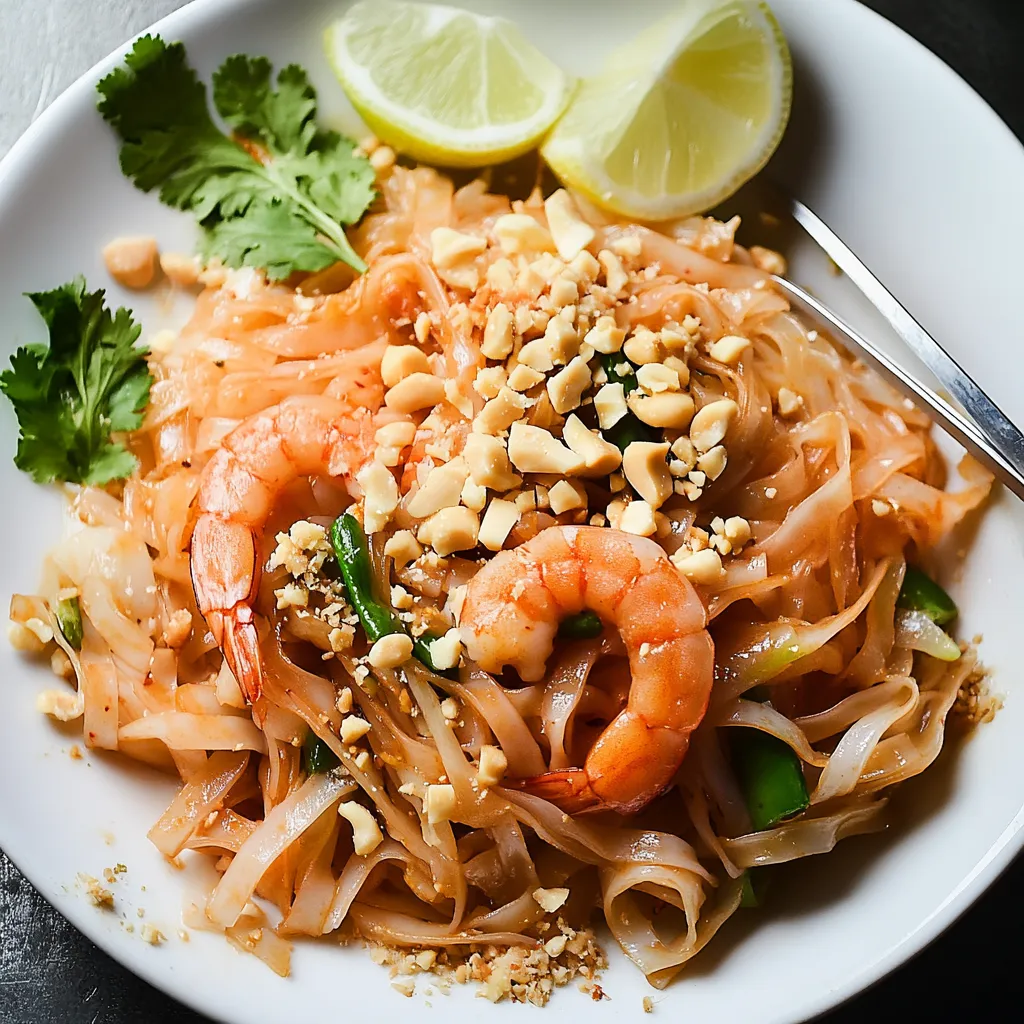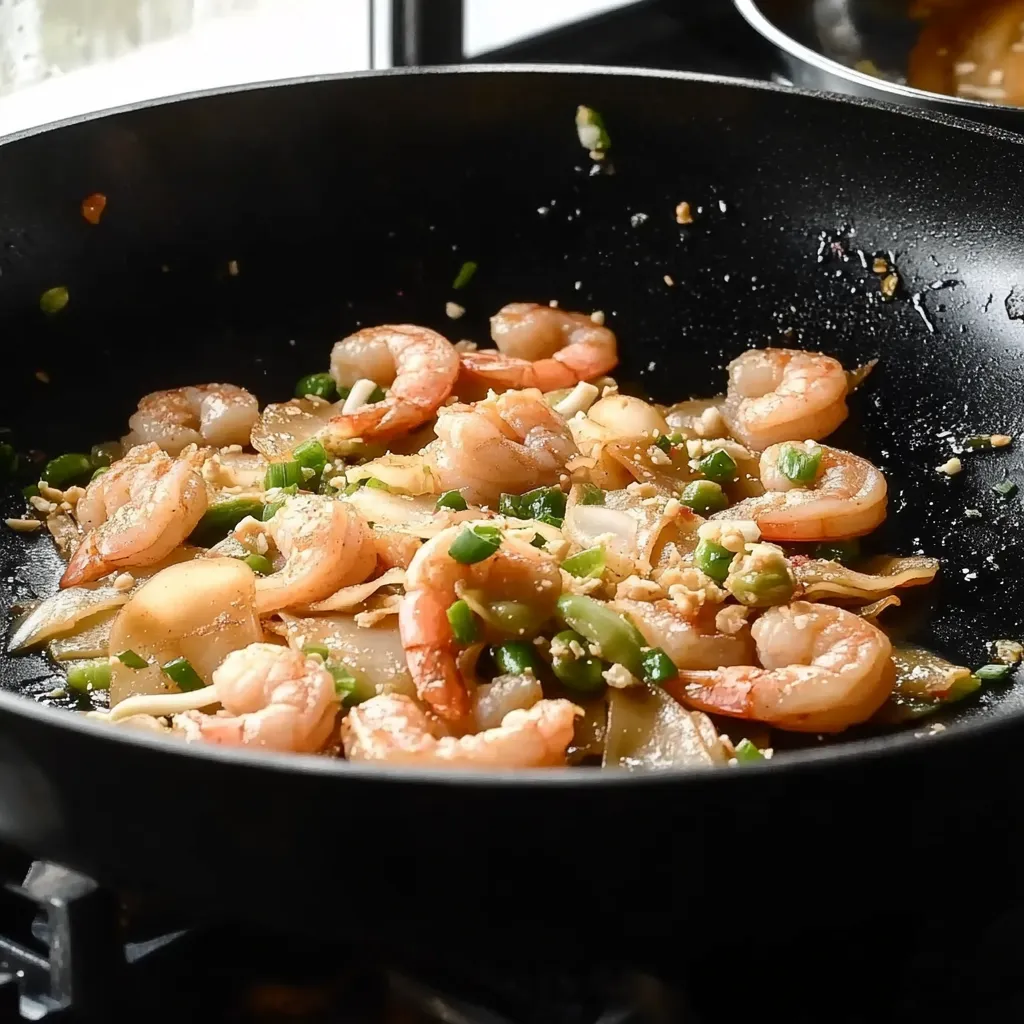 Pin it
Pin it
Soft rice noodles tucked around juicy shrimp and fluffy eggs, all wrapped in a perfectly balanced sweet-tangy sauce make up this simplified take on Thailand's popular street food favorite. Every bite gives you the perfect mix of soft noodles, crisp veggies, and crunchy peanuts that make pad Thai so darn good.
I spent so long getting pad Thai from takeout places before I figured out making it myself wasn't just doable - it's actually pretty easy. The secret is getting everything ready before you start cooking, since things move fast once you fire up the stove.
Key Ingredients
- Rice noodles: Go for flat, medium-sized ones that say pad Thai on the package
- Fish sauce: Adds that must-have savory kick - grab Thai or Vietnamese types if you can
- Ketchup: Makes the perfect sweet-sour mix without hunting for tamarind paste
- Shrimp: Use medium ones that'll cook fast and stay tender
- Fresh bean sprouts: Give that necessary snap and brightness
Directions
- 1. Nail The Noodles
- Start by dunking rice noodles in super hot water till they're pliable but still got some bite. They'll finish cooking later, so slightly firm works better than mushy. Cool them under cold water to stop them cooking more.
- 2. Mix Up The Sauce
- Stir together fish sauce, soy sauce, ketchup, and brown sugar in the right amounts. This mix brings those sweet, salty, and tangy flavors that make pad Thai taste so amazing.
- 3. Handle Your Proteins
- Cook the shrimp first, just till they turn pink. Take them out and scramble eggs on their own - keeping everything separate means better texture for each part.
- 4. Get The Stir-Fry Right
- Get your pan smoking hot. Work fast, tossing in noodles and sauce, stirring all the time so nothing sticks. You want the noodles soaking up sauce evenly.
- 5. Put It All Together
- Add your proteins back with fresh herbs and bean sprouts. Mix gently so everything combines but stays intact.
 Pin it
Pin it
I grew up with great Thai places nearby and thought making pad Thai at home would be too hard. But after my Thai buddy showed me these tricks, I found out getting those same awesome flavors isn't tough at all with a few simple swaps.
Smart Heat Management
Make sure your pan's hot enough that stuff sizzles when it hits the surface but not so hot everything burns. If your noodles seem too hard, splash in tiny bits of water instead of overcooking them.
Keeping Leftovers Fresh
Though it's best right after cooking, you can keep leftovers up to two days. Heat them up gently with a little water to bring the noodles back to life. Throw in fresh sprouts and herbs just before you eat.
Protein Alternatives
Feel free to swap in thin chicken strips, firm tofu chunks (squeeze and fry them first), or mix different proteins together,
Ways To Switch It Up
Make it spicier with more chili flakes, toss in extra veggies like thin-cut carrots, or add more eggs if you want a no-meat version.
After trying to get this dish right many times, I've learned success comes down to prep work and timing. Having all your stuff ready before cooking makes sure everything stays the right texture, creating pad Thai that's as good as what you'd get at a restaurant. Whether you're new to Thai food or cook a lot at home, this easy-to-follow recipe gives you authentic flavor using stuff you can find at any grocery store.
 Pin it
Pin it
Frequently Asked Questions
- → Can I use a different protein?
- Sure! Swap in chicken, tofu, or more eggs. Just adjust the cooking time as needed.
- → Why include ketchup in Pad Thai?
- It’s not traditional, but ketchup gives the perfect sweet-tangy kick, similar to tamarind paste.
- → How do I stop the noodles from clumping?
- Soak them less, rinse with cold water after draining, and toss them straight into the hot pan.
- → Is this gluten-friendly?
- Not as written. Use tamari instead of soy sauce and check your other sauces for gluten.
- → Can I make this ahead of time?
- It’s best freshly cooked, but prepping the ingredients and sauce ahead helps save time.
